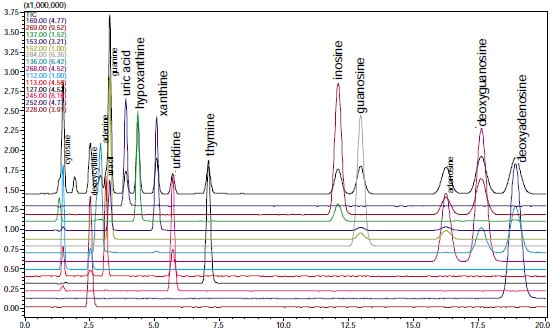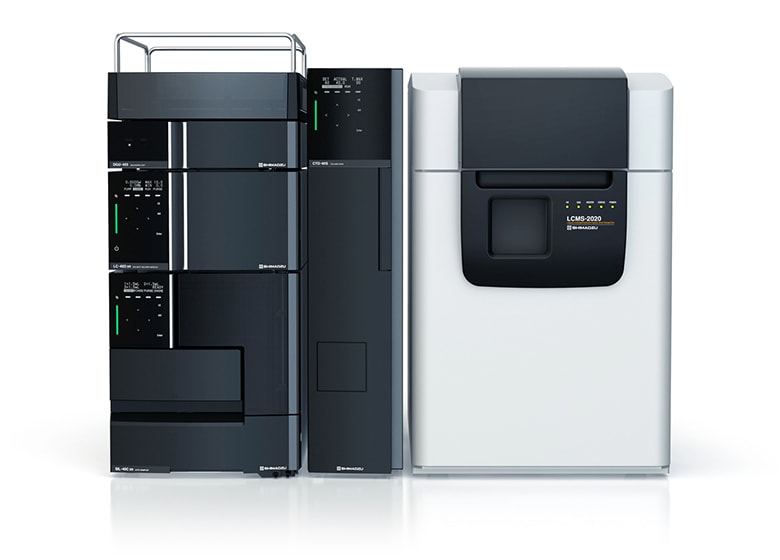LC/MS Analysis of Nucleic Acid-Related Compounds
The bases and nucleotides are generally separated by ion-exchange or reverse-phase mode HPLC and detected by UV absorbance detection.
In the example introduced here, nucleic acid-related compounds were analyzed by LC/MS, which offers mass information and enables high-sensitivity analysis.
Fig. 1 shows the structure and ESI mass spectrum of the purine base adenine and of the nucleotide adenosine. Under acidic conditions in the positive ion mode, the protonated molecule [M+H]+ is observed as a reference peak.
Fig. 2 shows the LC/MS analysis results of a standard mixture of nucleic acids. SIM measurements were conducted using [M+H]+ as the detected ion for each nucleic acid. Satisfactory separation of the 15 components was achieved.

Fig. 1 Positive-Ion ESI Mass Spectrum of Adenine and Adenosine

Fig. 2 SIM Chromatogram of Standard Mixture of Nucleic Acid Bases and Nucleotides
Liquid Chromatograph Mass Spectrometer

- The LCMS-2020 offers rapid 15 ms positive/negative ionization switching time that permits high-speed detection (MS measurements) that follows high-speed LC separation.
- The newly developed ion optical system, Qarray® Optics, achieves superior sensitivity, reproducibility, and linearity.
- Rapid, 15,000 u/sec scanning achieves high ion permeability while maintaining the resolution.
- The LCMS-2020 dramatically enhances long-term stability and ease of maintenance.


